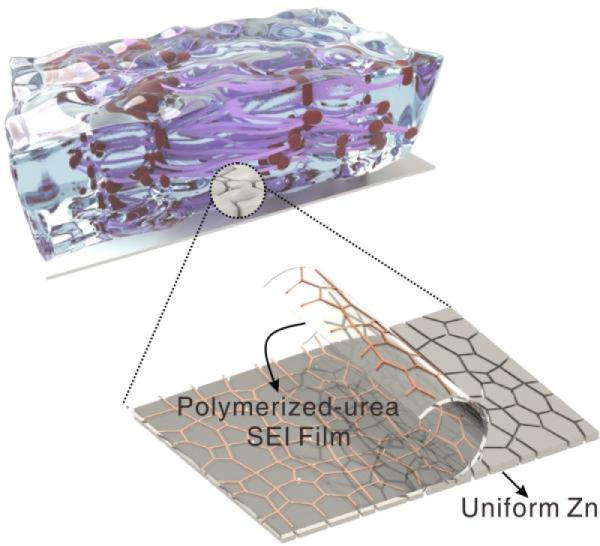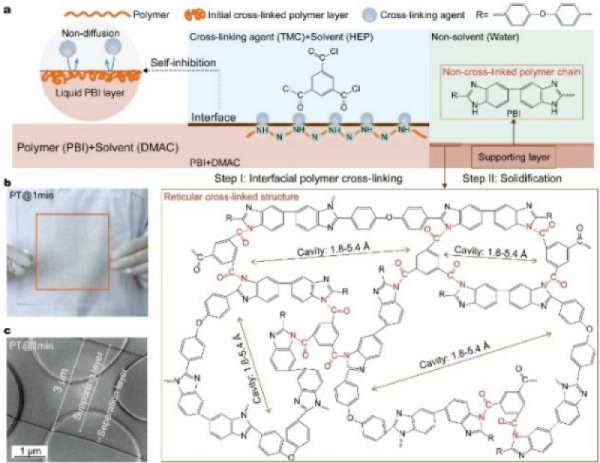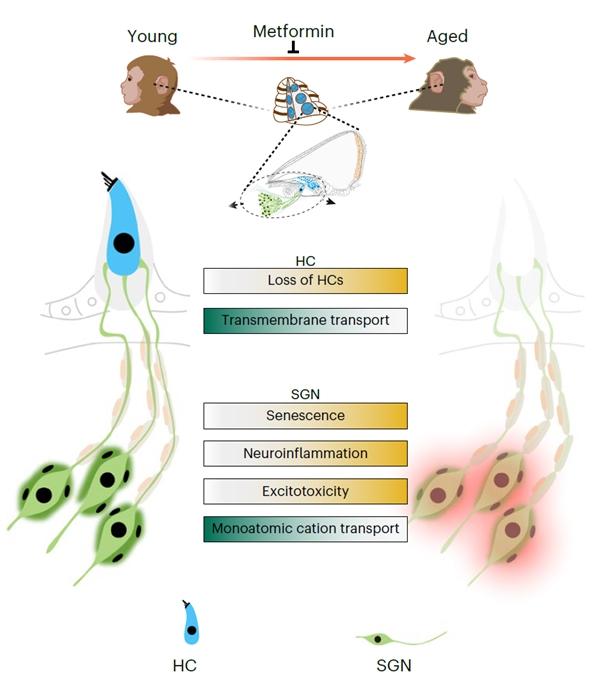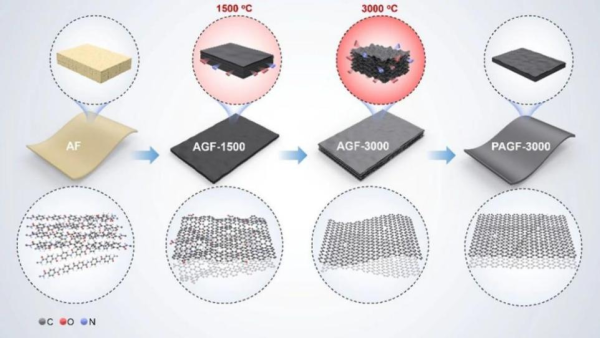Weekly Advanced Technologies〔80〕

Weekly Advanced Technologies〔80〕丨Eco-Conscious Zinc-Ion Batteries: Urea as a Sustainable Electrolyte Additive for Enhanced Performance; Overcoming Limitations in Flow Batteries for High-Current-Density Performance
Aqueous zinc-ion batteries (AZIBs) have garnered significant research interest owing to their inherent safety and cost-effectiveness. However, the widespread adoption of these systems is hindered by critical challenges associated with conventional liquid electrolytes, including leakage risks and severe corrosion issues. To address these limitations, the development of high-performance quasi-solid gel electrolytes has emerged as a pivotal research direction for enabling practical applications.
In liquid-flow battery systems, conventional polymer membranes face a fundamental trade-off between ion selectivity and permeability, limiting their overall efficiency. To overcome this challenge, researchers have recently developed an innovative ultra-thin ion-selective membrane, demonstrating a substantial improvement in battery performance.
Based on the weekly diary of technology provided by the daily list of the NCSTI online service platform, we launch the column "Weekly Advanced Technologies" at the hotlist of sci-tech innovation. Today, let's check out No.80.
1. ACIE丨Eco-Conscious Zinc-Ion Batteries: Urea as a Sustainable Electrolyte Additive for Enhanced Performance

Schematic diagram of electrolyte/negative electrode interface for solving the problems of bulk phase mechanical strength and interfacial stability
A research team led by HU Linhua at the Institute of Solid State Physics, Hefei Institutes of Physical Science, Chinese Academy of Sciences , has made significant progress in gel electrolyte development for aqueous zinc-ion batteries (AZIBs). Conventional liquid zinc acetate electrolytes suffer from poor solubility and insufficient zinc-ion supply, which restrict battery capacity and rate capability, while also posing leakage and corrosion risks.
The researchers innovatively employed urea as a zinc-compatible solubilizer, overcoming the concentration limitation of zinc acetate in hydrogels. Mechanistic analysis revealed that the "salt precipitation" effect triggered polymer chain dehydration, thereby promoting chain segment entanglement. This structural rearrangement endowed the gel with exceptional mechanical properties—demonstrating a tensile strain of 557% and compressive strength of 3.7 MPa—which collectively contributed to a dramatic improvement in fatigue resistance.
Furthermore, during battery operation, an in-situ-formed polyurea solid electrolyte interphase (SEI) layer was observed, which played a critical role in stabilizing the electrode/electrolyte interface. As a result, the assembled Zn//Cu battery achieved a Coulombic efficiency of 99.93%, while the Zn//NH4V4O10 soft-package battery delivered a specific capacity of 280.7 mAh g−1 at 500 mA g−1, with 90.13% capacity retention after 200 cycles. The gel electrolyte has demonstrated exceptional flexibility and stability, maintaining consistent voltage output even under bending and folding conditions.
This remarkable performance has highlighted its promising potential for portable and wearable electronics applications.
2. Nature Chemical Engineering丨Overcoming Limitations in Flow Batteries for High-Current-Density Performance

Researchers prepare ultra-thin polymer membrane materials for high-performance flow batteries using a novel interfacial cross-linking strategy
A research team led by LI Xianfeng from the Dalian Institute of Chemical Physics, Chinese Academy of Sciences, in collaboration with ZHANG Hongjun’s group at the University of Science and Technology of China, has made significant progress in ion-selective membranes for flow batteries. They proposed a novel interfacial cross-linking strategy to fabricate an ultra-thin polymer membrane with exceptional stability and a thickness of only 3μm. When applied to vanadium flow batteries, this membrane enabled an operating current density of up to 300 mA/cm².
Unlike traditional polymer membranes plagued by the trade-off between selectivity and permeability due to their random pore structures, this membrane employs confined interfacial cross-linking to form a nanoscale separation layer with a "quasi-ordered" reticular architecture. Its pore size distribution (1.8–5.4 Å) enables simultaneous efficient sieving of active species and rapid charge-carrier transport.
Moreover, the covalent cross-linking network enhances mechanical robustness, outperforming commercial Nafion 212 membranes in both in-plane tensile strength and through-plane hardness. Tests confirm ultralow area-specific resistance and negligible active species permeability, breaking the conventional selectivity-permeability compromise in polymer membranes.
In practical applications, the all-vanadium flow battery achieves >80% energy efficiency at 300 mA/cm² with this membrane. The membrane also demonstrates exceptional performance in alkaline zinc-iron and aqueous organic flow batteries, showcasing its versatile compatibility. This interfacial cross-linking strategy exhibits broad applicability, providing a new paradigm for developing high-performance flow battery systems.
3. Nature Aging丨Single-Cell Atlas of Primate Cochlear Aging Offers Novel Therapeutic Avenues for Presbycusis

Cellular molecular mechanisms of cochlear senescence in primates
The research team of LIU Guanghui and QU Jing from the Institute of Zoology, Chinese Academy of Sciences, in collaboration with CHAI Renjie from Southeast University and WANG Si from Capital Medical University, among others, has made a significant breakthrough in the study of age-related hearing loss. For the first time, they mapped the cellular and molecular atlas of cochlear aging in primates, revealing that the downregulation of transmembrane transporter SLC35F1 in hair cells is a core biomarker of cochlear aging. Additionally, they confirmed that metformin exhibits cochlear protective effects.
Due to the scarcity of human cochlear samples, previous studies largely relied on rodent models, which could not accurately reflect cochlear changes in primates. The research team overcame technical challenges and successfully obtained cochlear tissues from young and aged cynomolgus monkeys. By integrating single-cell sequencing and AI-powered analysis, they systematically mapped high-resolution molecular signatures of cochlear aging in primates. The study identified: (1) pathological hallmarks (hair cell loss, spiral neuron degeneration, vascularis atrophy); (2) SLC35F1 downregulation in hair cells, whose knockdown triggered apoptosis and mimicked age-related hearing loss."
Further studies have demonstrated that the cochleae of aged crab-eating monkeys chronically administered clinical doses of metformin have exhibited significant rejuvenation markers, including attenuated hair cell loss and reduced neuronal senescence.
Transcriptomic analyses have revealed that metformin exerts its protective effects by suppressing inflammatory responses and activating auditory pathway-related genes. These findings have not only deepened the understanding of cochlear aging mechanisms but have also provided a scientific foundation for early detection and targeted intervention in age-related hearing loss.
4. Advanced Functional Materials丨Novel Graphite Film Enables Efficient 3D Chip Cooling with Bidirectional Heat Transfer

Schematic diagram of the preparation mechanism of bi-directional high thermal conductivity graphite film
As chip power density increases, heat dissipation has become a critical bottleneck limiting the stability and performance of electronic devices. Although traditional carbon-based thermal materials exhibit strong in-plane thermal conductivity, their through-plane thermal conductivity is poor, making it difficult to meet 3D heat dissipation requirements.
The Shanghai Institute of Microsystem and Information Technology, Chinese Academy of Sciences, in collaboration with Ningbo University, proposed using aramid film as a precursor and successfully fabricated a bidirectional high-thermal-conductivity graphite film with a thickness of 40 μm through high-temperature graphitization. This film achieves an in-plane thermal conductivity of 1754 W/m·K, while its through-plane thermal conductivity reaches 14.2 W/m·K.
The study leverages the low oxygen content and nitrogen doping characteristics of aramid to achieve defect self-repair, oriented grain growth, and optimized gas escape at high temperatures. Nitrogen atoms facilitate lattice repair, reducing the defect indicator ID/IG to as low as 0.008, while the ordered benzene ring structure provides a template for graphite lattice formation, resulting in a large-grain, highly oriented graphite structure. Compared with traditional methods using graphene oxide (GO) or polyimide (PI), the new material demonstrates significant improvements in both thermal conductivity and crystal quality.
The experiments have demonstrated that applying this graphite film to smartphone thermal management has successfully reduced the chip surface temperature by 7°C, while in high-power chip cooling, the temperature difference has been narrowed to 9°C, showcasing its exceptional thermal management capability.
This achievement has provided a critical thermal material for high-power devices such as 5G chips and power semiconductors, demonstrating broad application prospects.